The 5.2-metre-long, 2.5-tonne heavy BMW X7 drives like a much smaller car, shrinking around the driver. Yes, the bulk is somewhat evident but the physics-defying handling dynamics, active suspension, immaculate damping, and stability control hard-wired to the xDrive all-wheel drive make it agile and flickable like few would believe. However, rather than egging me to get on with the drive more spiritedly, the X7 is adept at calmly munching miles in a hurry because the seating makes it feel more like a lounge on wheels. The platform it is built on seems like a direct descendant of the architecture of luxury, if not an identical twin, and the comfort level in here is incredibly high. The support from the seats, the ventilation, the quiet cabin, the soft-touch and easy-hold chunky steering wheel, the advanced active driver assistance, and the sheer feel of what seems like a bulletproof package make driving seem effortless while making some other things seem trivial. Were the seat equipped with massage, I would probably need to stop, so as not to doze off into peaceful slumber. And that’s the X7’s trump card.
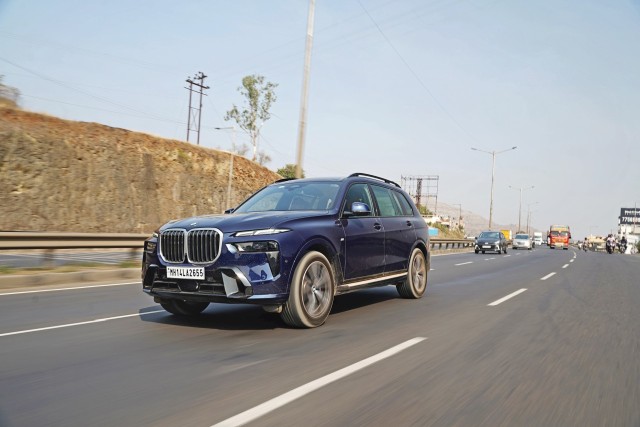
The BMW X7 can be driven like a Rolls-Royce in Comfort mode and like a BMW X6 in Sport mode. The relaxation in one is replaced by the involvement in the other. For cruising, Eco Pro mode changes things further with the powertrain and climate control taking it easier. The mild-hybrid system also takes over coasting duty with the engine temporarily decommissioned and this has a profound impact on efficiency. Although the observed city efficiency was in higher single figures, the highway figure trots up to double digits. Given a longer stretch and a lighter load, the chance of getting or even exceeding the claimed combined figures is more than likely.
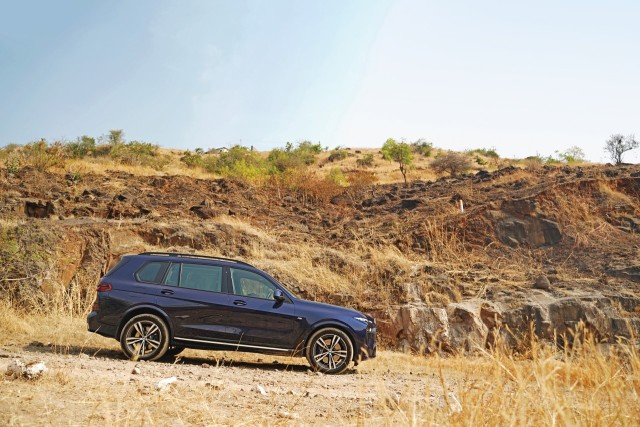
The BMW X7 can even handle some challenging non-road sections. This is partly due to excellent traction and power delivery and the ground clearance of 221 millimetres with the five-level air suspension also having an additional 75 mm to play with when raising the body from low level two to high level two. From standard height, the middle setting, the BMW X7 can drop to the tune of 40 mm or rise 35 mm—this varies front and rear by four to 13 mm. What that feature also leads to is proper peace of mind and little or no stress over bad surfaces. Then there are the brakes. Large steel discs with bite-y pistons help shed speed quickly and effortlessly.
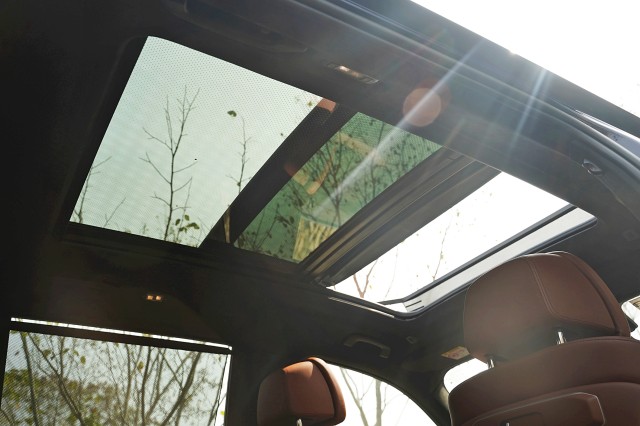
There are more benefits of giving in and getting the largest X on offer. The three rows of seats, with this six-seat M Sport version, offer high comfort. Getting the third row seats up and actually getting into the third row are both easier with powered controls and automated movement. The ease of access seems to have been prioritised with conveniently placed controls on the second row seats as well as in the boot. The split tailgate is another useful touch. Boot volume with all six seats up is a large hatchback-like 300 litres whereas the maximum volume is a cavernous 2,120 litres.
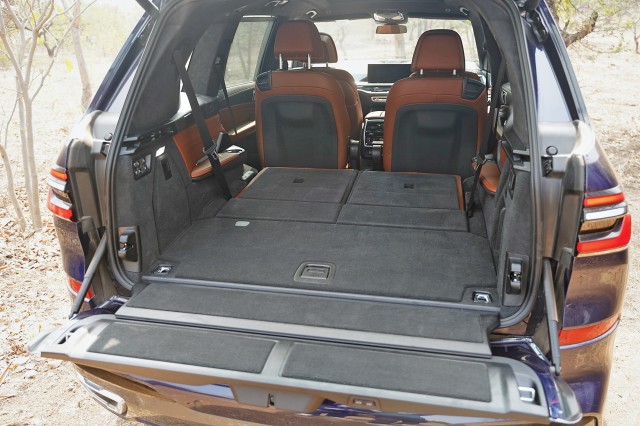
Rs 1.30 crore (ex-showroom) for this BMW X7 xDrive40d M Sport seems rather attractive. Thankfully, that includes the BMW Individual Tanzanite Blue paint finish and Merino leather our car had, plus the large and wide 21-inch wheels with 285/45 rubber all round. BMW also offer the X7 diesel in a seven-seat Design Pure Experience trim level that costs a lakh less and offers a second-row bench and different wheels, while losing the sporty M embellishments though not much else. There is a strange sense of satisfaction in having something to do it all in. And, with the X7, BMW seem to have truly gone all in.
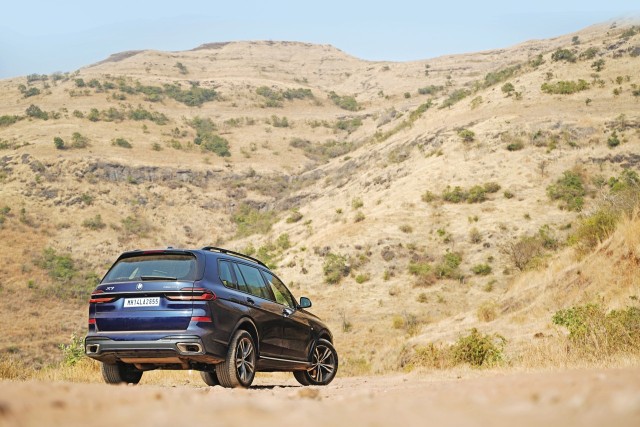
Need to Know – BMW X7 xDrive40d M Sport
Price: Rs 1.30 crore (ex-showroom)
Engine: 2,993 cc, in-line six, 48-volt mild-hybrid, turbo-diesel
Power: 340 hp @ 4,400 rpm
Torque: 700 Nm @ 1,750-2,250 rpm
ISG Assist: 9.0 kW (12 hp), 200 Nm
Combined Peak Output: 352 hp, 720 Nm
Transmission: Eight-speed automatic, all-wheel drive
Suspension: Double wishbone front, multi-link rear, air springs
Weight: 2,490 kg


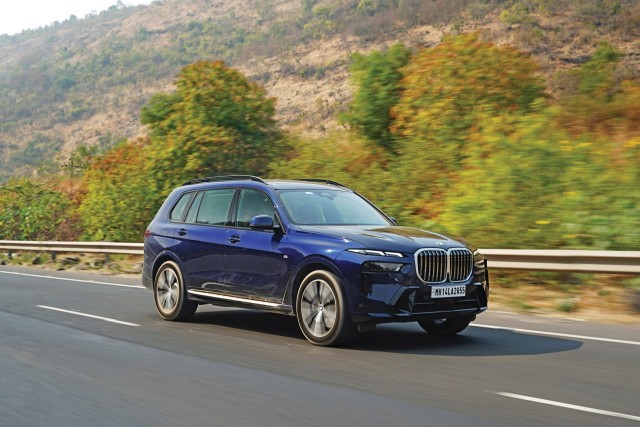



















Leave a Reply